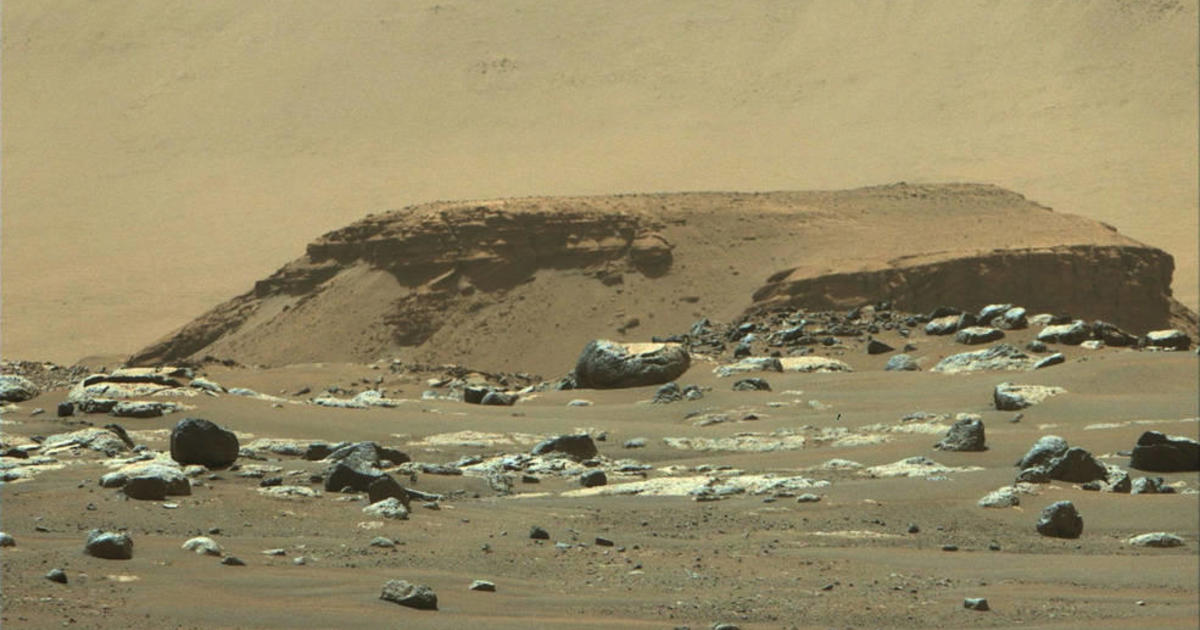
A new study from the team behind NASA's Perseverance Mars rover reveals that areas of Mars — specifically the Jezero Crater, an area scientists think may hold keys to ancient Martian life — experienced "significant" flash floods that carved the landscape into the rocky wasteland we see today.
The team says they based their findings on images the rover took of sediment that gathered at the end of an ancient river that fed a lake inside the Jezero Crater.
The photos, taken during a landing on February 18 and published on Thursday, suggest that billions of years ago, Mars had a thick atmosphere that could support large quantities of water. The sediment seen in the pictures shows a now-barren river delta that experienced "late-stage flooding events" whose waters carried boulders and debris from Mars highlands to the banks of the crater.
"Never before has such well-preserved stratigraphy been visible on Mars," said lead author Nicolas Mangold from the Laboratoire de Planétologie et Géodynamique. "This is the key observation that enables us to once and for all confirm the presence of a lake and river delta at Jezero. Getting a better understanding of the hydrology months in advance of our arrival at the delta is going to pay big dividends down the road."
The NASA team has, according to their press release, "long planned to visit the delta" leading into the Jezero Crater due to the potential that it may contain fossils of ancient microbial life.
The collected images have given the scientists information into where they can find the best rock samples to find the traces of life that may have once existed on Mars, which scientists hope they can bring back to Earth to analyze with more powerful lab equipment. The evidence of so much ancient water brings the scientists hope.
"We saw distinct layers in the scarps containing boulders up to 5 feet across that we knew had no business being there," said Mangold.
Mangold and his team believe that the flash floods that carried these boulders — some for tens of miles — would have moved at 4 to 20 mph.
Sanjeev Gupta, from Imperial College, London, and a co-author of the paper, says the findings "could potentially provide valuable insights into why the entire planet dried out" and what happened to the ancient microbial life.
NASA next plans to send spacecraft to Mars to collect the rock samples and return them to Earth.
Download our Free App
For Breaking News & Analysis Download the Free CBS News app
https://news.google.com/__i/rss/rd/articles/CBMiVmh0dHBzOi8vd3d3LmNic25ld3MuY29tL25ld3MvcGhvdG9zLW5hc2EtcGVyc2V2ZXJhbmNlLXJvdmVyLWFuY2llbnQtZmxhc2gtZmxvb2RzLW1hcnMv0gFaaHR0cHM6Ly93d3cuY2JzbmV3cy5jb20vYW1wL25ld3MvcGhvdG9zLW5hc2EtcGVyc2V2ZXJhbmNlLXJvdmVyLWFuY2llbnQtZmxhc2gtZmxvb2RzLW1hcnMv?oc=5
2021-10-09 17:04:41Z
52781922944809
Tidak ada komentar:
Posting Komentar